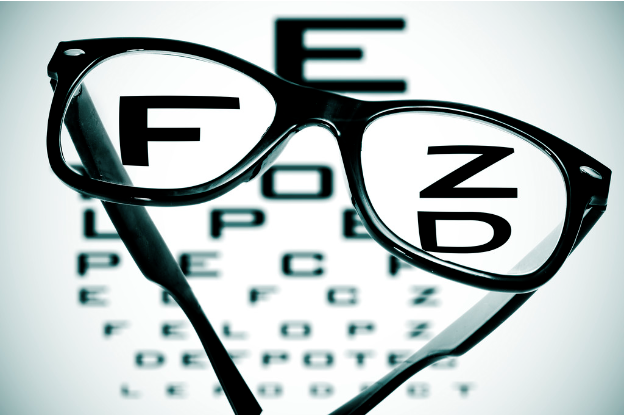Eye drops are a type of medication used to treat eye conditions and infections.
They come in many different forms, each designed to address specific symptoms and concerns. In this article, we will discuss the various types of eye drops available on the market.
First, there are lubricating eye drops or artificial tears. These can be used for relief of dry eyes caused by environmental factors such as wind or air conditioning, long hours spent in front of a computer screen, or contact lens use. These can provide temporary relief from discomfort but may not address underlying causes like allergies or infection.
Next is anti-allergy eye drops that contain antihistamines and mast cell stabilizers to relieve itchy eyes caused by allergies such as hay fever or pet dander allergies. They work by blocking histamine production which is responsible for causing inflammation and swelling during an allergic reaction. Vision correction is a powerful tool that can help people of all ages to achieve better visual acuity and improved ocular health.
Antibiotic eye drops contain active ingredients like polymyxin B sulfate, bacitracin zinc, and neomycin sulfate that help fight bacterial infections in the eyes such as conjunctivitis (pink eye). Some antibiotic formulations also contain steroidal components which can help reduce inflammation associated with these types of infections while others come without steroids entirely depending on your doctor.
Benefits of Using Eye Drops to Correct Vision
For those looking to improve their eyesight, using eye drops is an effective and convenient way to do so. Eye drops are available in both prescription and over-the-counter forms, making it easy for people of all ages to access them. In this article, we’ll discuss the benefits of using eye drops to correct vision.
The primary benefit of using eye drops is that they provide a quick solution for vision problems. For example, if you suffer from dry eyes due to aging or a medical condition, artificial tears can help lubricate your eyes and alleviate any irritation or discomfort you might be experiencing. Similarly, certain types of eyedrops can reduce inflammation in your eyes which may improve your vision if it has been affected by conditions such as glaucoma or cataracts.
Eye drops also offer a hassle-free method for correcting vision compared with more invasive procedures such as surgery or laser treatments. While these more intensive methods may yield better results in some cases, they also come with increased risks and costs associated with them that many people are not comfortable with taking on. With eye drops, however, you can simply apply the product yourself at home without having to worry about any major side effects occurring as a result of their use.
Precautions and Side Effects
The world of medicine and health can be intimidating, especially when it comes to understanding the potential side effects and precautions associated with certain treatments. To help make sense of it all, let’s take a closer look at the concept of precautions and side effects.
Precautions are measures that people should take before beginning or continuing any type of medical treatment. These may include avoiding certain activities or foods, taking medications as prescribed, abstaining from alcohol or drugs for a period of time, getting regular exercise, and other steps recommended by your health care provider. Taking these precautions will help reduce potential risks associated with the medication or treatment being used.
Side effects are any undesired reactions to a medication or treatment that occur after it has been administered. These can range from mild discomfort to severe complications such as bleeding or organ failure in extreme cases. Common side effects include nausea, dizziness, headaches, itching, and rashes among many others depending on the drug used. It is important to inform your doctor if you experience any unusual symptoms while taking medications as they might indicate something serious is happening in your body requiring attention right away.
How to Use Eye Drops for Vision Correction
Eye drops can be an effective and convenient way to correct vision issues such as nearsightedness, farsightedness, and astigmatism. Although glasses and contact lenses are still the most popular methods for vision correction, eye drops are becoming increasingly popular in recent years as a non-invasive alternative. Here is a guide on how to use eye drops for vision correction:
1. Start by purchasing the right type of eye drops from your optometrist or local pharmacy. Make sure that you read the instructions carefully so that you know which type of drop is best suited for your eyes. Eye drops can be expensive, so it's important to get the right ones for your needs.
2. Once you have purchased the eyedrops, make sure that you wash your hands before applying them to avoid any contamination or infection of the eye area. If possible, use a clean tissue or cotton swab when handling them.
3. When it’s time to apply the eyedrops to each eye, tilt your head back slightly and pull down on your lower lid until it creates a pocket between it and your eyeball (this is known as pulling down on your “lower eyelid”).
Conclusion
Eye drops have become a popular alternative to glasses and contact lenses as a way to correct vision. The drops are easy to use, generally safe, and can be used in conjunction with other corrective measures. The effectiveness of eye drops as a vision correction tool varies from person to person but they have been proven to improve vision in some people. While there are potential risks associated with the use of eye drops, when used properly and under the supervision of an optometrist or ophthalmologist, they may be an effective way for some people with poor vision to improve their sight.

















